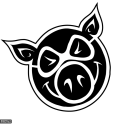I've found that I shoot glocks far better when I press the trigger in one continuous motion, like working a double action revolver trigger. "Pin and reset" tends to lead me to slap the trigger too much. Plus, when I reset the trigger in recoil I don't take up the slack on the next trigger press, no matter the distance.
Also to note: When I shoot a competition, I don't cautiously take up slack, no matter the distance. I just don't. Call it fake stress inoculation, but shooting competition has helped me to realize what I do and don't do with my gun under pressure, and it's not pin and reset.



 Reply With Quote
Reply With Quote





